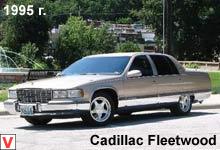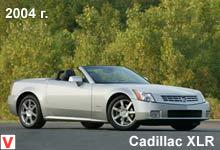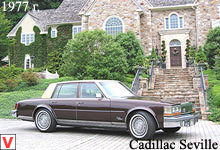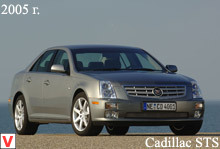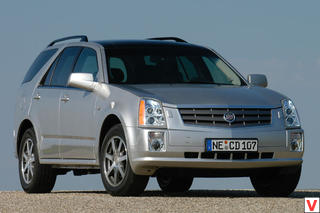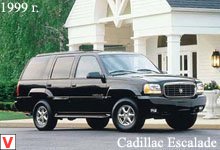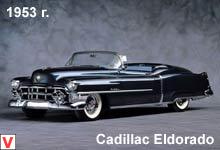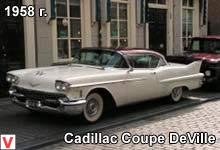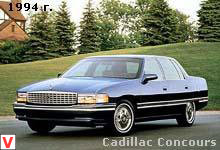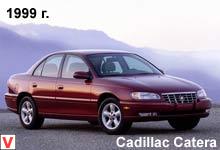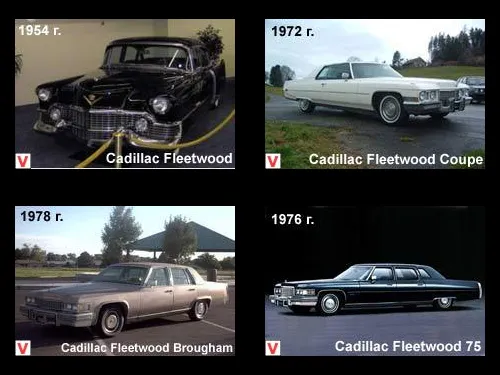
Fleetwood Metal Body was established April 1, 1909 in Fleetwood, Pennsylvania. It was an independent bodybuilding company until it was purchased by Fisher Body, a division of General Motors. The company continued its activities until 1931, when all production facilities were moved to Detroit. The company Fleetwood Metal Body before 1909 has already managed to establish itself as a manufacturer of beautiful aluminum bodies.
At that time, many famous people from the United States and from foreign countries such as India, Japan, and Poland applied to it with orders. Exclusive - it was just the word that attracted the rich. They purchased the engine, chassis and wheels from leading manufacturers and sent them to Fleetwood. Where the body was created and the interior decoration at the request of the customer. The customer met with the designer, who depicted the wishes of the client on paper. After that, work began on the implementation of the project. In the end, it was decided to release a car called Fleetwood.
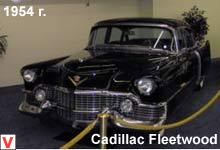
Cadillac Fleetwood has become one of the most popular cars from General Motors. The name Fleetwood has been featured since 1927. In 1946, Cadillac created a special version of the 60th series called "Series 60 Special Fleetwood". In 1965, the model Fleetwood Brougham appeared as the top version of the Sixty Special.
In 1971, cars based on platforms B, C and D were launched into production. In connection with this, Cadillac Fleetwood begins to use the D-platform. Engine volumes installed during this period were ambitious. These include the most modest power unit V8 volume of 7.

7 liters and the largest V8 with a volume of 8.2 liters. In 1977, the Fleetwood lineup was divided into two models. These were: the Fleetwood Limousine car, which had a long wheelbase of the D-platform and the Fleetwood Sedan (including Brougham - the name now meant an option package, rather than an independent model), which used a shorter C-platform. Also, a new Cadillac L33 V8 engine with a volume of 7.0 liters, as well as a little later thanks to the Oldsmobile and diesel powertrain. In 1980, Fleetwood cars retained models with a wheelbase length of 3086 mm and rear-wheel drive. Also this year, the 2-door model Fleetwood Brougham was created, based on the Cadillac DeVille.
Its distinctive feature was the roof of the landau (roof opening only above the rear seat). The limousine version, which was called the Fleetwood 75, was discontinued in 1984. In 1985, the 2-door Cadillac Fleetwood Brougham was discontinued. As well as for the rest of the Cadillac cars, 1980 was marked by the appearance of an unsuccessful V8-6-4 engine with shut off cylinders, whose electronics were very unreliable. In 1981, the 4.1-liter Buick V6 engine was used.

In 1985, all Fleetwood models (with the exception of Fleetwood Brougham) were transferred to a front-wheel drive C-platform. The standard version of the Fleetwood had a wheelbase length of 2814 mm, as well as other models based on the C-platform. And the length of the wheelbase of the model Limousine "Fleetwood 75" was 3414 mm. The Fleetwood Brougham model remained rear-wheel drive until 1986. In 1987, the rear-wheel drive Cadillac Fleetwood Brougham left the lineup of Fleetwood and became known simply as Cadillac Brougham.
Thus, the lineup of the Fleetwood lineup was only front-wheel drive versions. This year, only one engine variant was offered - the 4.1-liter V8 HT-4100, which in 1988 replaced the 4.5-liter V8 HT-4500. In 1989, the Fleetwood coupe began to have a wheelbase 2814 mm long, and 2891 mm sedans. Exterior changes were identical for both the coupe and sedans. The body length of the coupe was 5138 mm, and the sedan - 5215 mm. Until 1990, a 4.5-liter V8 HT-4500 power unit with a power of 180 hp was installed under the hood.
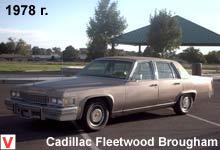
And in 1991, it was replaced by a 4.9-liter V8 HT-4900 engine with a 200-hp capacity. In 1993, Fleetwood replaces the front wheel drive C-platform with a new rear wheel drive D-platform. The bodywork was developed based on the Chevrolet Caprice.
In this model year, the Cadillac Fleetwood was the largest car in the United States at the time, until it was discontinued in 1996. In 1993, a 5.8 liter V8 LT05 engine was installed under the hood of the updated Cadillac Fleetwood. Its capacity was 185 hp. In 1994, the V8 LT-1 5.7 liter engine from the Chevrolet replaced the 5.8 liter power unit. Corvette.
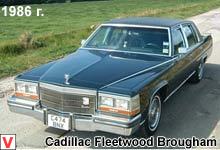
Its power was 260 hp In 1996, the Cadillac Fleetwood was replaced by the d'Elegance modification of the Cadillac DeVille. In this model year, the Cadillac Fleetwood was the largest car in the United States at the time, until it was discontinued in 1996. In 1993, a 5.8 liter V8 LT05 engine was installed under the hood of the updated Cadillac Fleetwood. Its capacity was 185 hp.
In 1994, the V8 LT-1 5.7 liter engine from the Chevrolet replaced the 5.8 liter power unit. Corvette. Its power was 260 hp In 1996, the Cadillac Fleetwood was replaced by the d'Elegance modification of the Cadillac DeVille. In this model year, the Cadillac Fleetwood was the largest car in the United States at the time, until it was discontinued in 1996. In 1993, a 5.8 liter V8 LT05 engine was installed under the hood of the updated Cadillac Fleetwood.
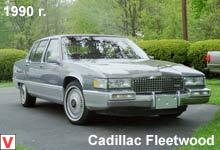
Its capacity was 185 hp. In 1994, the V8 LT-1 5.7 liter engine from the Chevrolet replaced the 5.8 liter power unit. Corvette. Its power was 260 hp In 1996, the Cadillac Fleetwood was replaced by the d'Elegance modification of the Cadillac DeVille. the power of which was 185 hp. In 1994, the 5.8-liter V8 LT05 power unit was replaced by the 5.8-liter V8 engine, borrowed from the Chevrolet Corvette. Its power was 260 hp In 1996, the Cadillac Fleetwood was replaced by the d'Elegance modification of the Cadillac DeVille. the power of which was 185 hp.
In 1994, the 5.8-liter V8 LT05 power unit was replaced by the 5.8-liter V8 engine, borrowed from the Chevrolet Corvette.
